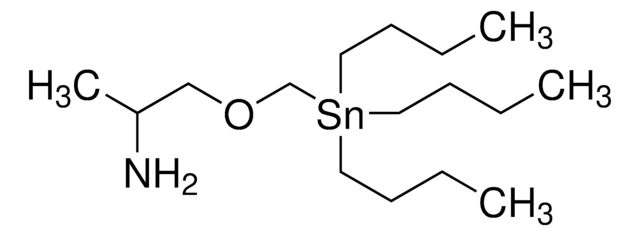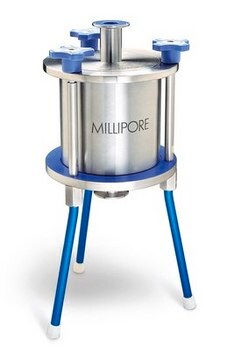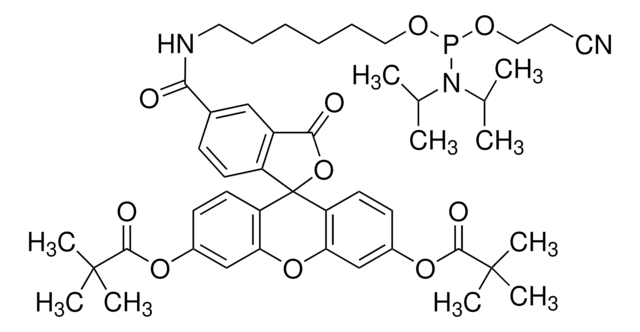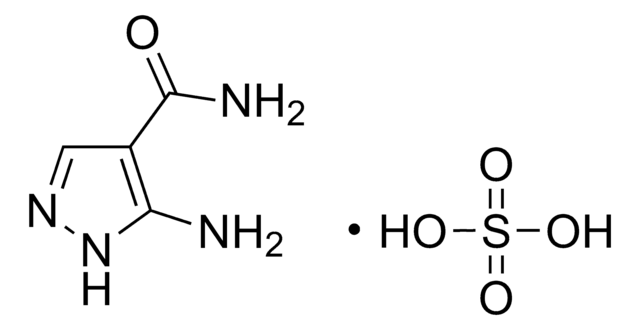MABF917
Anti-CRACC Antibody, clone 4G2
clone 4G2, from rat
Sinônimo(s):
SLAM family member 7, CD2-like receptor-activating cytotoxic cells, CRACC, Leukocyte cell-surface antigen, Novel Ly9, CD319
About This Item
Produtos recomendados
fonte biológica
rat
Nível de qualidade
forma do anticorpo
purified antibody
tipo de produto de anticorpo
primary antibodies
clone
4G2, monoclonal
reatividade de espécies
mouse
técnica(s)
flow cytometry: suitable
immunoprecipitation (IP): suitable
Isotipo
IgG1κ
nº de adesão NCBI
nº de adesão UniProt
modificação pós-traducional do alvo
unmodified
Informações sobre genes
mouse ... Slamf7 (75345)
Descrição geral
Especificidade
Imunogênio
Aplicação
Flow Cytometry Analysis: A representative lot detected CRACC expression on the surface of many types of mouse immune system cells, including NK cells, NKT cells, B cells, DCs, macrophages and activated T cells (Cruz-Munoz, M.E., et al. (2009). Nat. Immunol. 10(3):297-305).
Affects Function: A representative lot, in combination with a rabbit anti-rat IgG, cross-linked cell surface CRACC and induced similar CRACC phosphorylation in IL-2-activated NK cells from wild-type, SAP-deficient, or EAT-2–ERT–double knock (DKO) mice (Cruz-Munoz, M.E., et al. (2009). Nat. Immunol. 10(3):297-305).
Immunoprecipitation Analysis: A representative lot, in combination with a rabbit anti-rat IgG and protein A, immunoprecipitated CRACC from lysates of IL-2-activated mouse NK cells (Cruz-Munoz, M.E., et al. (2009). Nat. Immunol. 10(3):297-305).
Inflammation & Immunology
Immunological Signaling
Qualidade
Flow Cytometry Analysis: 0.1 µg of this antibody detected CRACC-positive mouse splenocytes.
Descrição-alvo
forma física
Armazenamento e estabilidade
Handling Recommendations: Upon receipt and prior to removing the cap, centrifuge the vial and gently mix the solution. Aliquot into microcentrifuge tubes and store at -20°C. Avoid repeated freeze/thaw cycles, which may damage IgG and affect product performance.
Outras notas
Exoneração de responsabilidade
Não está encontrando o produto certo?
Experimente o nosso Ferramenta de seleção de produtos.
Código de classe de armazenamento
12 - Non Combustible Liquids
Classe de risco de água (WGK)
WGK 2
Ponto de fulgor (°F)
Not applicable
Ponto de fulgor (°C)
Not applicable
Certificados de análise (COA)
Busque Certificados de análise (COA) digitando o Número do Lote do produto. Os números de lote e remessa podem ser encontrados no rótulo de um produto após a palavra “Lot” ou “Batch”.
Já possui este produto?
Encontre a documentação dos produtos que você adquiriu recentemente na biblioteca de documentos.
Nossa equipe de cientistas tem experiência em todas as áreas de pesquisa, incluindo Life Sciences, ciência de materiais, síntese química, cromatografia, química analítica e muitas outras.
Entre em contato com a assistência técnica![(2S)-6-Amino-2-{[(9H-fluoren-9-ylmethoxy)carbonyl]amino}hexanoic acid](/deepweb/assets/sigmaaldrich/product/structures/208/694/eddf6778-ca06-4285-b640-a693f1ce3eda/640/eddf6778-ca06-4285-b640-a693f1ce3eda.png)




![1,3,8-triazaspiro[4.5]decane-2,4-dione AldrichCPR](/deepweb/assets/sigmaaldrich/product/structures/154/012/bf434fcc-95bc-4f79-8d16-67d62a49013a/640/bf434fcc-95bc-4f79-8d16-67d62a49013a.png)



![2-Oxa-6-azaspiro[3.3]heptane](/deepweb/assets/sigmaaldrich/product/structures/391/874/ff74bb51-dd44-4cca-9b3f-3b380ccae360/640/ff74bb51-dd44-4cca-9b3f-3b380ccae360.png)